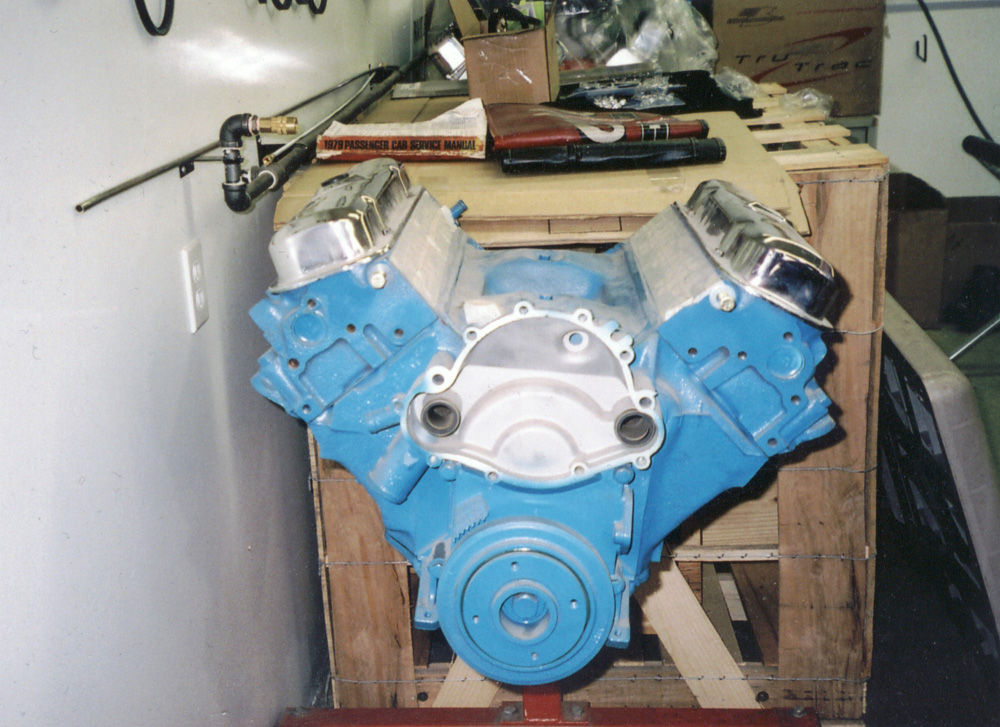
Coolant System Ills & Cures
By: Patrick Smith
(ďAll the guys would stand around looking under each otherís hoods and rear
ends.Ē)
A gratefully anonymous lady talking about the Houston Drive In scene. Iíve been
very busy working on restoration consulting, pre purchase inspections and
magazine articles which is why Iíve been silent here. My humble apologies,
friends. Pretty soon the weather will warm up and your first drive of the season
will arrive. Along with increasing temperature is the possibility of coolant
system woes. With the Pontiac V8, we often experience overheating problems with
old engines and even a fresh rebuild. This article goes over some of the basics
and covers some unique Pontiac cooling system peculiarities which may solve your
problem.
The cooling system consists of a rad, fan and shroud, clutching fan, coolant
hoses, water pump and bypass hoses, a thermostat and pressurized rad cap with
overflow tank. It is a semi enclosed system, meaning the rad cap keeps pressure
high enough to enable the coolant mix to circulate and remove engine heat
without danger of boiling over. When a cooling system ages, wear isnít visible
to the untrained eye. Coolant hoses rot from the inside; rad caps lose their
pressure holding ability. They are easily replaced; however other items may be
in danger as well.

The inside of the water pump recess has two sleeves which circulates coolant through the engine block.
The thermostat is the engine temperature regulator. It acts as a valve that
stays closed until a predetermined temperature is reached. When the engine is
hot enough, it opens and lets coolant flow to the radiator completing a circuit
through the whole block. Thermostats can fail in the open position which is
called the safe mode. It never blocks off the rad side meaning your car takes a
long time to warm up and will waste gas. Older thermostats can fail in the
closed position meaning it never leaves the cylinder water jackets and heads.
This obvious tip off there is a cold rad with poor running engine from high
heat. You can buy fail safe thermostats in a variety of heat ranges.
Your coolant system doesnít like air. Now, a little air always gets inside and
that is normal. Weíre talking about leaks from hoses, cracked radiators, heater
core hoses. Just a little bubbling reduces the cooling ability quite a bit.
Check your hoses. Also check water pump, cylinder head gaskets, intakes manifold
cracks and other surface areas like frost plugs. If youíre losing fluid, itís a
good sign something is wrong. Run your engine with the rad cap off and check for
bubbles. A lot of bubbles that increase when you accelerate strongly suggests
head leak. Whether by blown gasket or cracks, youíll have to dig further in.
Other areas known to create excess heat include retarded ignition timing, loose
fan belts, worn out pumps.

The baffle plate (far right) should have a tight enough gap between impeller and hole to promote efficient coolant transfer. A gap wider than .060" starts cutting down efficiency.
Check your replacement water pump as sometimes impeller height differs between cast and stamped versions.
The Pontiac V8 engine often gets blamed for overheating after a rebuild and
people sometimes think it may have been overbored, causing heat buildup due to
thinner cylinder jackets. More likely the culprit is the water pump itself. The
Pontiac pump is an impeller design with dual bearing surfaces and a baffle plate
mating to the block with two transfer holes. This baffle plate has two transfer
holes and big central hole for the impeller vanes to move. The gap between the
impeller vanes and baffle plate is often on the huge side. Iíve seen them with
1.00Ē to 4.00Ē gap. A gap wider than .060Ē between the impeller vanes and baffle
plate is too wide. A wide gap reduces the ability of the impeller to move fluid
through the block. Measure the gap between the pump side of the baffle plate and
vanes. Use a hammer and lightly, lightly tap it down around the circumference
and remeasure. One note of interest is the Pontiac pressed metal impeller is
quite short compared to a later cast impeller. The Miloden aluminum water pump
cast impeller is taller and this means you donít have to bend the baffle plate
so much to improve it.
The plate itself should be free of corrosion and holes. Banged up ones can be
replaced if needed. This will solve 90 percent of cooling ills.
The Pontiac rad is a side flow unit with side tanks. If you use a cut to fit
upper hose, make sure there is no slack. If you have too much hose, making an S
bend or especially if it rises above the rad tank, water flow is impeded. On a
Trans Am there isnít much space between the rad and the hood but on a full size
car or a GTO, you can have a hillbilly style goose neck and that will bump your
heat quotient a bit! Cut to fit, make sure its level, no higher and measure your
baffle plate to impeller clearance. Happy Motoring!
A video from www.auto-repair-help.com on how to flush your coolant system.